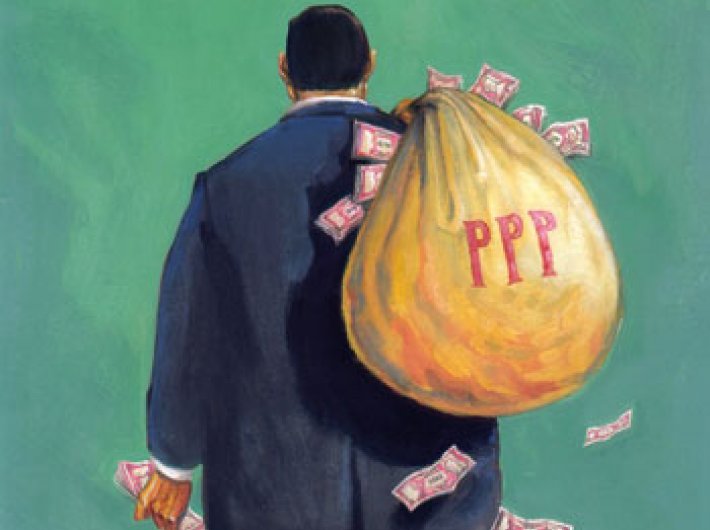The government created an enabling environment for private participation through several sector-specific and cross-sectoral initiatives
The government feels that the Public-Private Partnership (PPP) model needs to be revisited, said a World Bank expert.
“As for the attempts to revive the “flow” of PPP projects, the government is convinced that the model needs to be revisited, with particular focus on rebalancing risk, as articulated in the Budget Speech of 2015-16: “In infrastructure projects, the sovereign will have to bear a major part of the risk without, of course, absorbing it entirely”, Sri Kumar Tadimalla, senior transport specialist with the World Bank's Transport & ICT Global Practice wrote in a blog.
“In keeping with this, the Ministry of Road Transport and Highways (MoRTH) is introducing new models such as, for example, Hybrid Annuity Model (HAM), wherein the private sector is spared from bearing the traffic and inflation risks. Also, steps are being taken to achieve more robust preparation of the projects with particular focus on expediting land acquisition and other critical clearances including through the Ministers’ Group on Infrastructure for improved inter-ministerial coordination. Steps are also being taken to reach out to new pools of investors such as, for example, pension & insurance funds and also boost investors’ confidence and lenders’ comfort through amendments to Model Concession Agreement,” writes Tadimalla.
Read: PPP: Pure and Private Pelf
The blog “India’s Tryst with PPPs: The High, The Low… and The Revival?” noted that in several economic infrastructure sectors, India enjoyed a strong track record of harnessing PPPs. Private sector investments in infrastructure more than tripled from the 10th Plan Period (2002-07; Rs 2 trillion) to the 11th Plan (2007-12; Rs 7.3 trillion). Between these plan periods, private sector share in infra investments increased from 22% to 38%. For a considerable period of time, on the score of mobilizing infrastructure investments through private participation among developing countries, India ranked 1st in Energy and Transport sectors and 2nd in Telecom (behind Brazil).
Read: Case of a missing P: where is public interest in PPPs?
This erstwhile success of India’s PPP program is attributable to well-crafted reform efforts by the government, and ably executed by the private sector, banks and other financial intermediaries. Following the economic liberalization initiated in the early 1990s, the government has created an enabling environment for private participation through several sector-specific and cross-sectoral initiatives, e.g., relaxing entry norms, tax concessions, independent regulation in telecom and power, mobilization of additional revenues through tolls and cess on fuel, establishment of a viability gap fund mechanism and India Infrastructure Financing Company Limited, etc.
Despite surging ahead even in the aftermath of the Global Financial Crisis, India’s PPP Program started showing signs of serious stress soon after. While a large portion of the private power generation capacity went into idle mode for lack of fuel linkages, the pace of number of km awarded to build operate transfer (BOT) players peaked in FY12 and plummeted in the next year. The reasons for this varied from irrational exuberance and gaming on the one end to less than robust due diligence on the past of the financiers on the other, and the usual project afflictions such as delays in land acquisition and obtaining requisite clearances and lower-than-expected-traffic in between. The consequent stress started showing up in many different ways, viz., tepid interest in BOT-Toll projects, calls for relief in power projects, substantial increase in stressed assets or NPAs with the Banks, etc. For example, as against the target of 9,500km for FY13, in the first half of the year, the National Highway Authority of India (NHAI) could award only 600km; while seven projects reportedly did not receive any bids and quite a few of the remaining faced an uphill struggle in achieving the financial closure.
Read: 'PPPs are public authorities as they deliver public utilities'
The blog said the positive news is that the government and the other key stakeholders trying to “work out” of the setbacks in different ways. Their efforts can be grouped under two broad categories: those dealing with the “stock” or “legacy” problem of stressed projects and those aimed at reviving the “flow” of PPPs. On the “stock” issue, for instance, the Reserve Bank of India opened up multiple avenues for restructuring the stressed loans, viz., 5/25, Scheme for Sustainable Structuring of Stressed Assets (S4A), Strategic Debt Restructuring (SDR), easier norms for refinancing existing exposure, etc. Similarly, the initiatives by the MoRTH in this regard include more liberal exit policy in the concession agreement, one-time fund infusion to revive stuck projects, fast-track dispute resolution and even termination. Using a combination of these measures, out of 73 National Highway projects (covering a length of 8,300 km) that were languishing post-award in early 2014, the ministry resolved all issues with respect 21 projects and terminated 43 others.
It noted that the government and other key stakeholders continue to regard PPPs as a critical element in the infrastructure development strategy.
Read: World Bank blog - India’s Tryst with PPPs: The High, The Low… and The Revival?
